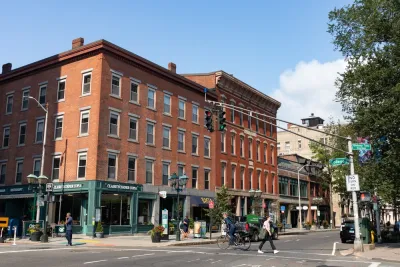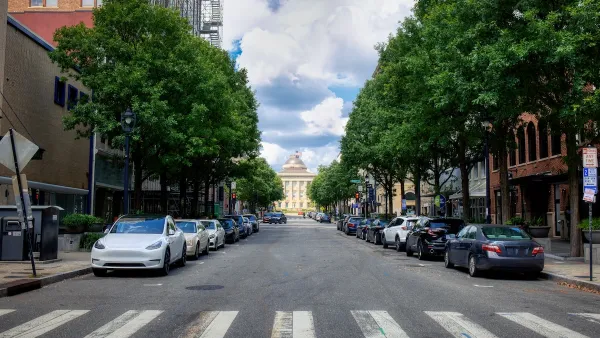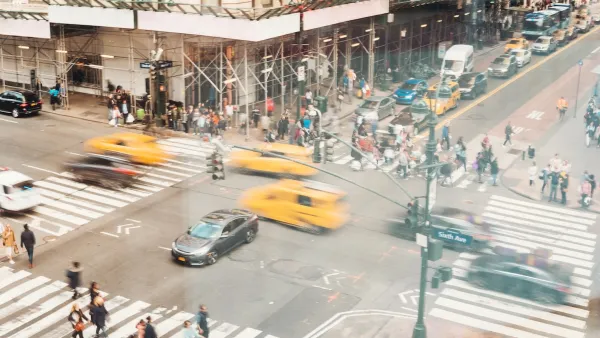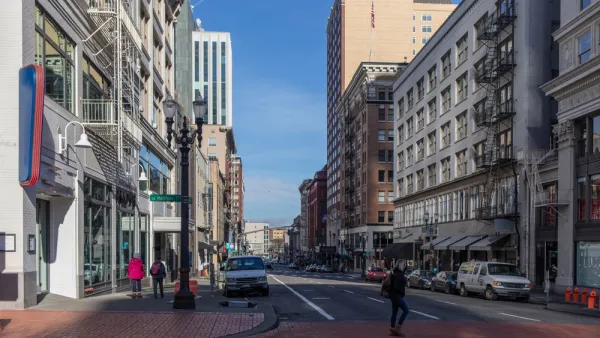The proposed legislation could energize efforts to eliminate fatal crashes and fix the structural flaws that make roads inherently more dangerous.

A bill making its way through the Connecticut state legislature would codify the state’s commitment to Vision Zero and require municipalities to actively plan for safer and more accessible roads for all users. In an op-ed published on CT News Junkie, Kerri Ana Provost argues in favor of the bill, pointing out that “One month into 2023, 42 collisions resulting in 43 pedestrian deaths during 2022 were entered into the [Connecticut Crash Data Repository] database.”
Provost parses the data to understand the nature of the crashes, revealing that pedestrian distraction did not factor into any of the fatal crashes in 2022. “Looking back at 2021, only two of the 58 victims were noted as being distracted, and the nature of it was described as being outside of a vehicle, not on a phone.”
Among other initiatives, the bill would require cities to create Complete Streets or Comprehensive Safety plans and allow automated traffic enforcement, which is shown to reduce serious crashes. Provost urges legislators to support the bill and its promise for systemic change, noting that making streets safe for all is about much more than just telling pedestrians to be more careful. “Instead of shunning victims of traffic violence for a split-second poor decision they may have made, we should look at how our system sets us up for failure.”
Traffic safety advocates around the country are making similar calls for reorienting road safety efforts toward addressing infrastructure and design issues rather than focusing singularly on pedestrian and driver awareness and education.
FULL STORY: Vision Zero Bill Would Address Causes of Pedestrian Crashes

National Parks Layoffs Will Cause Communities to Lose Billions
Thousands of essential park workers were laid off this week, just before the busy spring break season.

Retro-silient?: America’s First “Eco-burb,” The Woodlands Turns 50
A master-planned community north of Houston offers lessons on green infrastructure and resilient design, but falls short of its founder’s lofty affordability and walkability goals.

Delivering for America Plan Will Downgrade Mail Service in at Least 49.5 Percent of Zip Codes
Republican and Democrat lawmakers criticize the plan for its disproportionate negative impact on rural communities.

Test News Post 1
This is a summary

Test News Headline 46
Test for the image on the front page.

Balancing Bombs and Butterflies: How the National Guard Protects a Rare Species
The National Guard at Fort Indiantown Gap uses GIS technology and land management strategies to balance military training with conservation efforts, ensuring the survival of the rare eastern regal fritillary butterfly.
Urban Design for Planners 1: Software Tools
This six-course series explores essential urban design concepts using open source software and equips planners with the tools they need to participate fully in the urban design process.
Planning for Universal Design
Learn the tools for implementing Universal Design in planning regulations.
EMC Planning Group, Inc.
Planetizen
Planetizen
Mpact (formerly Rail~Volution)
Great Falls Development Authority, Inc.
HUDs Office of Policy Development and Research
NYU Wagner Graduate School of Public Service





























